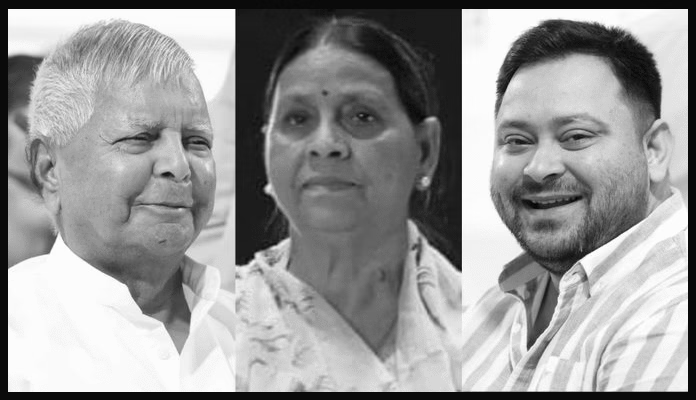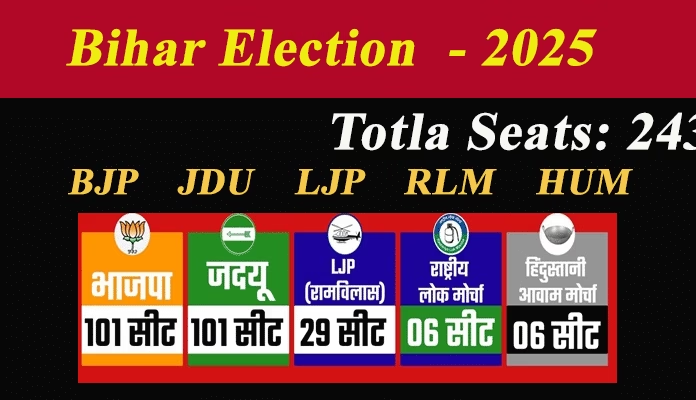
 Bihar’s politics is currently passing through an intense election-like phase. Although the dates for the assembly elections have not yet been announced, the entire state is already charged with an electoral atmosphere. Adding fuel to this mood was the ‘Voter Adhikar Yatra’ (Voter Rights March) launched by Rahul Gandhi and Tejashwi Yadav. Starting from Sasaram on August 17, the march lasted for about 16 days, covering nearly 1,300 kilometers across 23 districts, and concluded with a grand finale in Patna on September 1. The aim of this march was not merely to gather crowds or hold rallies but to directly pressure the Election Commission regarding alleged discrepancies in the voter list and issues related to voting rights. While the opposition projected it as a campaign to save democracy, the ruling NDA dismissed it as a misleading exercise to fool the people. Beyond these claims and counterclaims, one thing is certain the march has injected a new vibrancy into Bihar’s political atmosphere.
Bihar’s politics is currently passing through an intense election-like phase. Although the dates for the assembly elections have not yet been announced, the entire state is already charged with an electoral atmosphere. Adding fuel to this mood was the ‘Voter Adhikar Yatra’ (Voter Rights March) launched by Rahul Gandhi and Tejashwi Yadav. Starting from Sasaram on August 17, the march lasted for about 16 days, covering nearly 1,300 kilometers across 23 districts, and concluded with a grand finale in Patna on September 1. The aim of this march was not merely to gather crowds or hold rallies but to directly pressure the Election Commission regarding alleged discrepancies in the voter list and issues related to voting rights. While the opposition projected it as a campaign to save democracy, the ruling NDA dismissed it as a misleading exercise to fool the people. Beyond these claims and counterclaims, one thing is certain the march has injected a new vibrancy into Bihar’s political atmosphere.
The biggest highlight of this march was the joint presence of parties like the Congress, RJD, Samajwadi Party, and Jharkhand Mukti Morcha. On the final day in Patna, Rahul Gandhi and Tejashwi Yadav shared the stage with Akhilesh Yadav, which linked the march not just to Bihar politics but also to Uttar Pradesh. Akhilesh, from the stage, openly endorsed Tejashwi Yadav as the chief ministerial candidate of the Mahagathbandhan (Grand Alliance). He declared clearly that no one could be a better CM for Bihar than Tejashwi Yadav and that he would always stand firmly with him. This statement not only impacts Bihar’s politics but also sends signals for UP’s political scene.
In fact, the Congress and the RJD have not yet made things clear about the chief ministerial face. The Congress has remained silent on who will lead the alliance as CM. Tejashwi Yadav has on multiple occasions declared Rahul Gandhi as the candidate for Prime Minister, but the Congress has never explicitly acknowledged Tejashwi as the CM face. In such a situation of ambiguity, Akhilesh’s support for Tejashwi puts direct pressure on Rahul Gandhi and the Congress. Political analysts believe Akhilesh’s move is not confined to Bihar; it is also a strategic signal for the 2027 Uttar Pradesh assembly elections. Akhilesh knows that just as Congress has kept suspense over the CM face in Bihar, it could attempt something similar in UP. By making his position clear early, Akhilesh has ensured Congress cannot play any political trick against him in the future.
The public enthusiasm seen during the ‘Voter Adhikar Yatra’ has energized the opposition. On the concluding day in Patna, a ‘Gandhi to Ambedkar March’ was organized, led by Rahul Gandhi, Tejashwi Yadav, Akhilesh Yadav, Jharkhand CM Hemant Soren, TMC leader and former cricketer Yusuf Pathan, and several other opposition leaders. The march started from Gandhi Maidan and ended at Ambedkar Park. Through the march and the yatra, the opposition tried to send a strong message it is not limited to electoral alliances but is also united for protecting democracy and safeguarding voters’ rights.
Another political outcome of this yatra was that Congress managed to enhance its “bargaining power” in Bihar. Until now, Congress was often labeled as RJD’s “B-team” within the alliance, but the yatra allowed it to demonstrate its ability to attract crowds and set the agenda. Rahul Gandhi’s consistent focus on “vote theft” and “saving democracy” in his speeches projected Congress not merely as a supporting player but as a potential leader of the movement. This shift could redefine the RJD-Congress relationship.
However, the march was not without controversies. In Darbhanga, a controversial comment was made regarding Prime Minister Narendra Modi and his mother, which escalated political tensions. The BJP termed it a sign of opposition’s desperation and argued that the Grand Alliance cannot declare a CM face because Tejashwi Yadav is embroiled in corruption cases and under investigation by agencies. Deputy CM Samrat Choudhary said Rahul Gandhi’s silence proved that the alliance is riddled with internal contradictions.
Meanwhile, the opposition claims the people are now firmly behind them. Tejashwi Yadav stated that just as Akhilesh Yadav stopped BJP’s “400 plus” slogan halfway in UP, the opposition will stop BJP in Bihar too. He further said that Bihar’s voters are aware and this time will ensure change of power through the strength of their vote. Rahul Gandhi echoed this, saying the march was about the rights of Bihar’s people, and now it is the people themselves who will decide how democracy is to be safeguarded.
Looking at the march from a broader perspective, it is not confined to Bihar. For the opposition, it has served as a kind of laboratory. Through this effort, parties like Congress, RJD, SP, and JMM want to show voters that they are not merely engaging in alliance politics but are also fighting for people’s rights. On the other hand, the BJP continues to dismiss it as mere electoral drama. Still, there’s no denying that the march provided the opposition with a platform for unity, and the large crowds proved their message is resonating with the masses.
The big question now is whether this crowd support will translate into actual votes. Political history suggests that mobilizing crowds and converting them into votes are two different things. In Bihar, caste equations and local issues still dominate. The RJD’s Yadav-Muslim base, Congress’s traditional vote bank, SP’s limited presence, and JMM’s influence how these factors combine to shape the results remains uncertain. But one thing is clear the march has shifted the election narrative. Now the polls won’t just be fought on development or employment but also on sensitive issues like voting rights and the protection of democracy.
With this campaign, the Congress-RJD duo has certainly increased pressure on the BJP. But the NDA’s organizational strength and CM Nitish Kumar’s experience still remain formidable challenges for the Grand Alliance. The BJP is continuously emphasizing that the opposition stands only for dynastic politics and corruption, while the NDA will present itself in the election as the model of development and good governance.
Ultimately, this ‘Voter Adhikar Yatra’ has made one thing very clear the Bihar assembly elections are now shaping up into a direct contest. On one side, the NDA relies on its strong organization and governance experience, while on the other side, the Grand Alliance is showcasing its public support and unity. With the Rahul Gandhi Tejashwi Yadav duo and Akhilesh Yadav’s presence, the contest has become even more exciting. In the days ahead, it will be revealed whether the political energy generated by the yatra translates into real votes or not. But there is no doubt that it has given Bihar politics a new direction, making the 2025 assembly elections more interesting than ever.



